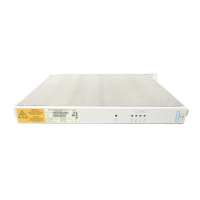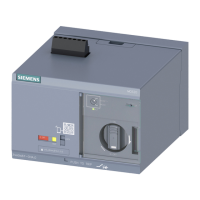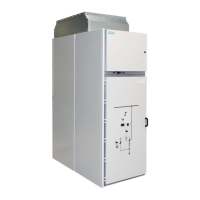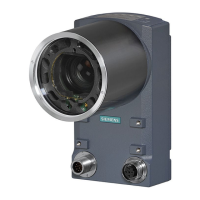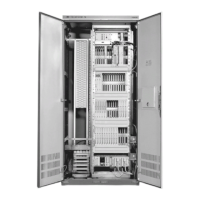Do you have a question about the Siemens MAGNETOM Avanto and is the answer not in the manual?
Overview of the operator manuals structure and availability.
Information on how to access operator manuals electronically and in print.
Describes the content and scope of operator manuals.
Defines roles like User/Operator, System Owner, and MR Worker.
Details the rebranding to Siemens Healthineers.
Introduction to the safety chapter and its importance.
Identifies potential hazards during MR system operation.
Discusses frequent causes of accidents and how to avoid them.
Outlines Siemens' responsibility regarding system use and safety.
Explains different types of electromagnetic fields and their risks.
Provides safety guidelines for the static magnetic field.
Safety guidelines for RF and gradient fields.
Lists conditions that contraindicate MR examinations for patients.
Discusses hazards related to collisions and mechanical movements.
Covers hazards and considerations when using third-party products.
Importance of room temperature and humidity for patient safety.
Requirements for safe access and egress of the examination room.
Information on noise levels during MR scans and hearing protection.
Guidelines for informing patients about safety and care during examinations.
Methods for monitoring patients during MR examinations.
Safety considerations during interventional MR procedures.
Causes and types of image artifacts and errors.
Safety precautions for maintenance and repair activities.
Explains warning signs and symbols used in the MR system.
Refers to safety instructions for the system owner.
Safety instructions for coils and quality assurance.
Identifies and explains the function of emergency switches.
Details the function of the emergency shut-down switch.
Details the function of the system off switch.
Explains the function and operation of the table stop button.
Procedures for handling medical emergencies during MR measurements.
First aid measures for coolant accidents (e.g., shortness of breath, frostbite).
Procedures and equipment for fire fighting in the MR environment.
General introduction to the MR system's components.
Information on system specifications and MR compatibility data.
Details about the magnet's field strength, cooling, and shielding.
Description of the gradient and control cabinets.
Information on RF coils and their handling.
Details on the host processor functions like patient management.
Information about the system's data recording drive.
Description of the monitor used for displaying images and dialogs.
Details about the Siemens keyboard and its function keys.
Information on the system's wheel mouse.
Functionality of the optional MR Workplace for evaluation.
Description of control units on the MAGNETOM Avanto and Verio.
Information shown on the table display and its functions.
Details on the patient table's function and connections.
Describes patient table control via buttons and important positions.
Instructions and warnings for using the laser-light localizer.
Explains the functions of the alarm box (alarms, system control).
How to check the LEDs on the alarm box for system status.
Details on intercom use for communication and operations.
Step-by-step guide to using the intercom functions.
Components and uses of the In-Room syngo Acq WP.
How to operate the In-Room syngo Acq WP using its controls.
Function of the gradient supervision system for damage prevention.
Details on the MagnaCoil headset for noise reduction and communication.
Methods to avoid motion artifacts using physiological signals.
Explanation of prospective triggering for image acquisition.
Explanation of retrospective gating for image acquisition.
Overview of the unit for controlling MR sequences with physiological signals.
Components of the PMU, including sensors and units.
How to connect external trigger sources to the PMU.
How to inform the patient and operate the PMU display.
Method for measuring heart sequences using ECG signals.
How ECG triggering works and its applications.
Available trigger methods for ECG triggering in the software.
Use of special MR Conditional and disposable electrodes.
Steps for preparing the patient and applying ECG electrodes.
Method using patient's pulse to trigger measurements.
How pulse triggering works and its applications.
Steps for attaching the pulse sensor.
Method for minimizing respiratory artifacts in abdominal imaging.
How respiratory triggering works using a cushion.
How to inform the patient and attach the respiratory cushion.
Connecting external sources to drive MR sequences.
Specifications for the external trigger signal.
Steps for connecting and performing external triggering.
Routine checks before using the MR system.
Detailed checks of system parts and areas for functionality.
Explains the three operating modes and system startup/shutdown.
Steps for switching on the MR system and its components.
Steps for shutting down the computer and MR system.
Procedure to shut down the MR Workplace software.
How to put the system into or take it out of standby mode.
Steps to prepare the MR system before patient examination.
How to connect the squeeze bulb and headset.
How to set magnet tunnel conditions using control units.
Instructions for preparing the patient for the MR examination.
How to inform patients about effects and risks of MR examinations.
Discusses potential physiological effects on patients during MR scans.
Explains Normal and First Level Controlled Operating Modes.
Information on Specific Absorption Rate and RF field exposure.
Explains peripheral nerve stimulation from gradient fields.
Procedures for starting and stopping MR measurements.
How to start an MR measurement using the control unit.
How to stop an MR measurement using the control unit.
General instructions for cleaning the MR system and accessories.
Approved and not approved cleaning agents for system components.
Cleaning procedures for accessories like camera lens and PMU.
Guidelines for cleaning and caring for the floor covering.
Procedures for returning and disposing of the MR system.
Safety precautions for MR system disassembly and disposal.
Information on returning and disposing of packaging material.
Procedures for returning and disposing of batteries.
Lists medical devices not manufactured by Siemens.
CE marking information for the PMU.
FCC and IC compliance statements for the PMU.
| Magnetic Field Strength | 1.5 T |
|---|---|
| Gradient Strength | 45 mT/m |
| Maximum Slew Rate | 200 T/m/s |
| Patient Table Weight Capacity | 250 kg |
| Magnet Type | Superconducting |
| Patient Weight Limit | 250 kg |
| Patient Bore Diameter | 60 cm |
| RF System | Tim (Total imaging matrix) technology |
| Dimensions | 220 x 220 x 300 cm |
| System Type | MRI Scanner |
| Dimensions (W x H x D) | 220 x 220 x 300 cm |
| Magnet Length | 200 cm |
| RF Coils | Variety of Tim coils available |

